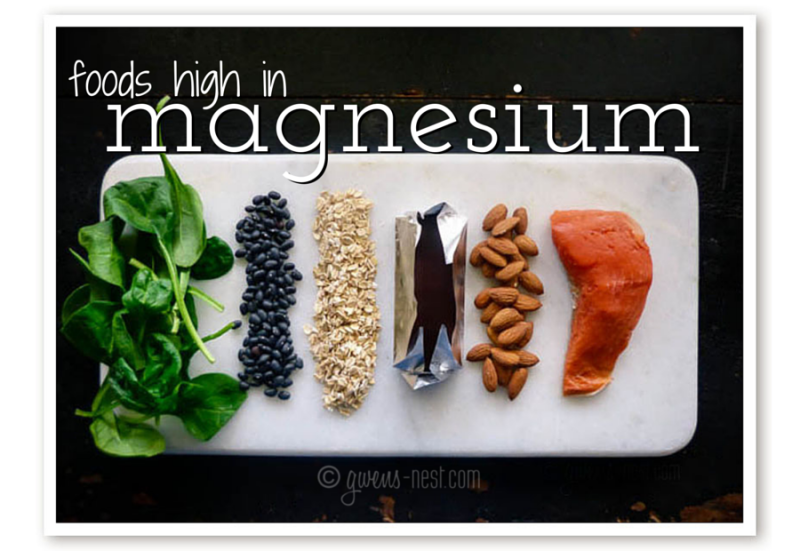 The foods high in magnesium are a great way to support healthy magnesium levels. Let’s take a quick look at the best sources of magnesium in foods, as well as some special tips for getting the most out of your magnesium rich foods and supplements.
The foods high in magnesium are a great way to support healthy magnesium levels. Let’s take a quick look at the best sources of magnesium in foods, as well as some special tips for getting the most out of your magnesium rich foods and supplements.
If you’ve read any of the series I’ve been writing on the importance of healthy magnesium levels, you’re probably already aware of how critical this nutrient is, and how common it is for American’s to be deficient in it. Last week, we talked about the best magnesium to take as far as supplements, but what about foods? I’m a *huge* fan of getting nutrition through foods, so this week we’ll look at 7 of my favorite food sources of magnesium. Please keep in mind that the number ranges here are really just averages and the actual nutrient level varies widely from crop to crop depending on the quality of soil that it’s grown in. Be sure to read the tips below to maximize your magnesium intake from these foods!
7 Foods High in Magnesium
- Spinach: 1/2 cup of cooked spinach contains almost 20% of your daily magnesium supply at 80-90 grams. Cooking helps to deactivate the oxyalic acid. I like to stir fry mine in a dry skillet and add to omlettes or stir into soups, sauces, or pasta dishes just before serving.
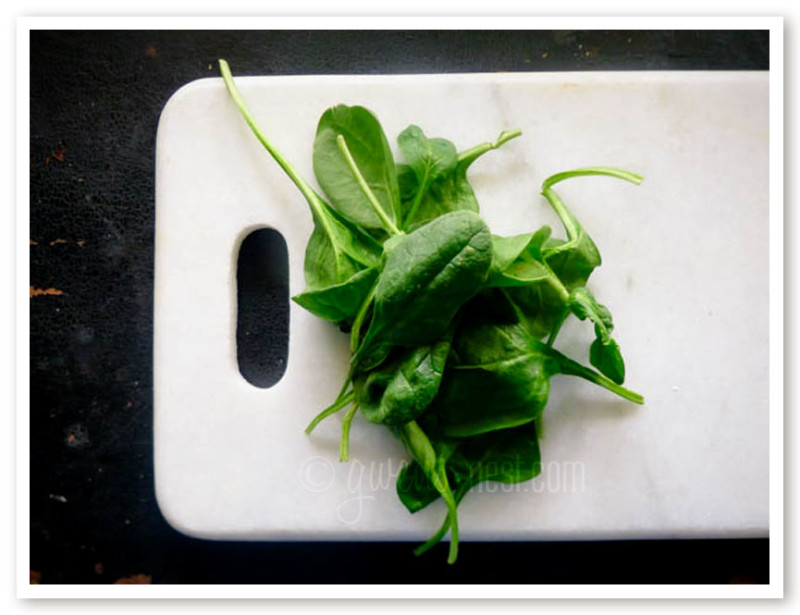
- Almonds, cashews & nuts: Almonds and cashews contain 75-80 mg per ounce. Almond butter per tablespoon boasts 48.5 mg and peanut butter just under 25.
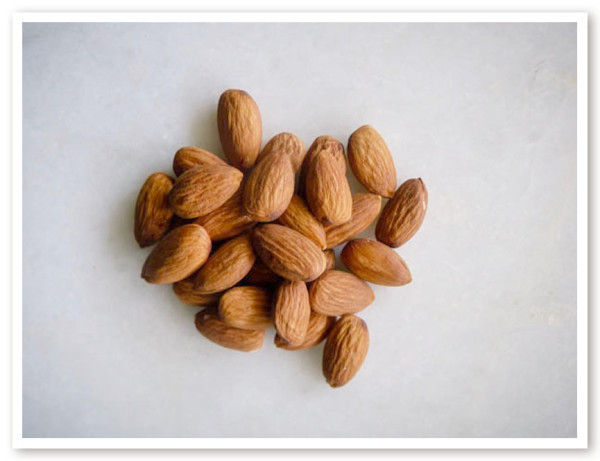
- Oatmeal & grains: good old fashioned oatmeal contains about 60 mg of magnesium. Wheat bran contains around 22 grams per tablespoon. Brown Rice contains 86 grams per cup vs. only 19 in white rice. Try germinating brown rice (presoaking) it to make it even more bio-available, or you can buy germinated brown rice here. (Amazon affiliate link)
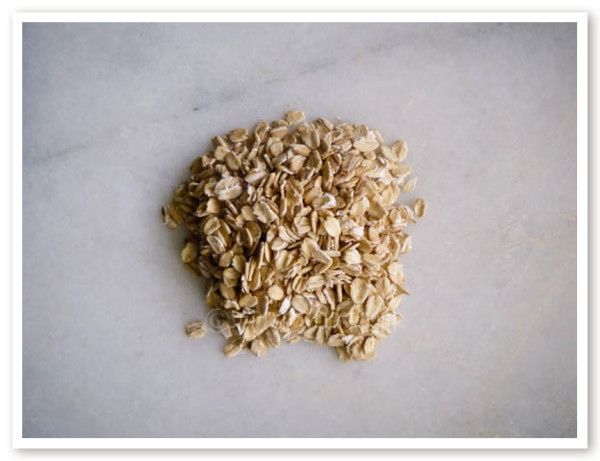
- Beans! A cup of great northern beans has a whopping 134 mg, and black beans contains around 120 mg, or 30% of the recommended daily allowance of magnesium. . Garbanzo, kidney and pinto beans come in around half that at only 68-69 mg per cup.
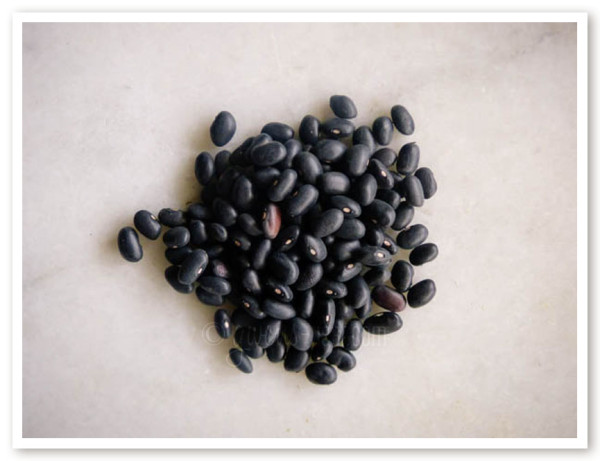
- Chocolate! OK, this is admittedly my favorite source of magnesium. Dark chocolate (70-85% dark) contains an impressive 63.8 mg per ounce! Cocoa powder ranges from 25-26 mg per tablespoon.

- Fish and Grassfed meat: Wild caught fish and grassfed meats are my preference for getting the best nutritient profiles and flavor. Farmed fish tastes sort of like how dog food smells to me, but that may be because I can’t get the images out of my head of feeding the farmed fish dry dog food on class field trips. <shudder> And with Aldi’s offering such reasonable prices of wild caught and grassfed meat, I love to have the option of higher quality protein sources.
Grassfed meat contains almost twice the magnesium vs. conventional grain fed beef. Wild caught salmon contains around 57 mg per *ounce*, so it’s a fantastic source of minerals!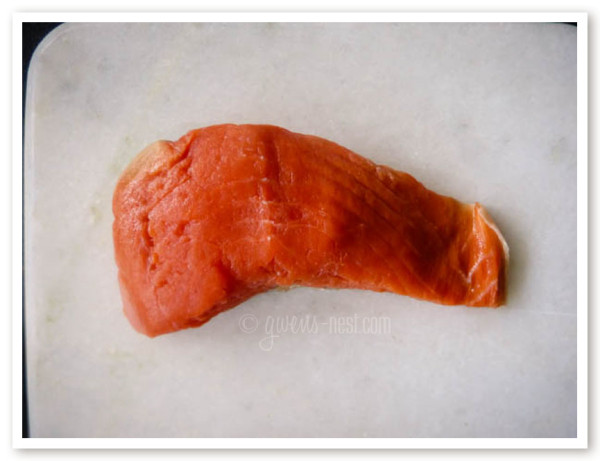
- Water. Mineral water in general, but especially this alkaline water recipe that I like to make from concentrate. Each 8 ounce glass of my alkaline water provides about 5 mg of magnesium, and over the course of the day, that’s a nice steady supply. I try to drink about 9 glasses of water a day, so I get in about 45 grams just with this simple tweak to my water routine.
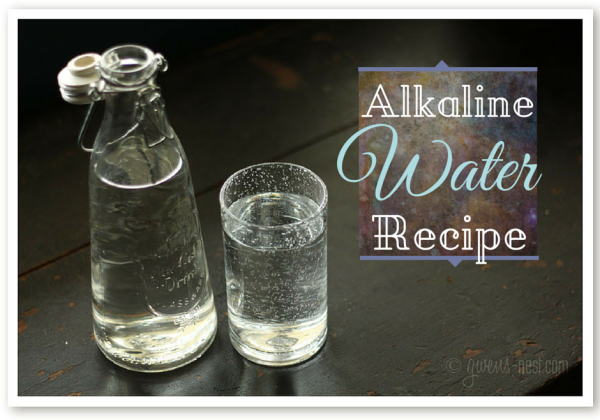
Tips for Getting the Most Magnesium From Your Foods & Supplements
I’ve learned a few important tips for maximizing your magnesium absorption. There are so many factors that play into the mineral level of a food, and also many factors that affect individual digestion and absorption of magnesium. Here are some important things to keep in mind:
- If you’re using prescription medications, always talk to your pharmacist about supplementing with herbs and minerals. Some common antibiotics and meds are contraindicated with magnesium supplementation, and can form dangerous compounds in the body. A good pharmacist is your best bet in knowing how to support your health by not creating interactions with your supplements and drugs.
- Consider using many different forms of magnesium daily to build up and maintain healthy levels. Why? Because we don’t retain or metabolize 100% of the mineral content of the food or supplements that we take. It’s estimated that most of us only absorb around 30-40% of the magnesium found in foods7 for multiple reasons including our own digestive health and also compounds in the food that bind the minerals. (I like to think that this is part of the design to keep minerals returning to the soil efficiently.) This makes it all the more important to be aware of getting sufficient minerals in each day in foods and supplements. The magnesium water is estimated to absorb around 40%, compared to less than 4% of the most common magnesium supplements. Taking epsom salt soaks a few times a week is another wonderful way to boost your levels.
- Lower your sugar intake. Magnesium is critical for cellular energy, and for every glucose molecule that’s metabolized, the body uses up 28 molecules of magnesium.8 It’s easy to see how our overuse of refined sugar products can drag us into deficiency pretty quickly! Natural forms of sugars do require magnesium to process, but they also contain the minerals that they body will need to process them. Pretty cool design, huh?!
- Take your mineral supplements just before bed, or at least apart from meals that contain cereal grains, nuts, and spinach. Why? Each of these mineral rich food sources also contains elements that prevent us from utilizing all of the minerals. Phytates, and oxalates will compete with and bind your supplemental minerals including calcium, magnesium iron, zinc, selenium, and more.9 So to get more out of your minerals, take them separately from a meal with these foods.
- If you know you have difficulty absorbing minerals from your foods, you may consider sprouting or fermenting your grains, nuts, or beans to break down the phytic acids that inhibit mineral absorption. The Nourishing Traditions Cookbook (Amazon affiliate link) is packed full of recipes and traditional food preparation methods that maximize nutrient levels in foods.
- Boost your soil: If you grow your own food, consider soil testing and supplementing the soil with epsom salts (magnesium sulfate) and other minerals that may be deficient in your area. It makes a significant difference to your plants health and final nutritional levels. If you *don’t* garden, consider looking for local farmer’s markets and ask about soil mineral supplementation.
- Avoid psyllium husk or fiber and gum arabic: both of these supplements seriously hindered absorption.10 The gum arabic enhanced bowel and kidney excretion of magnesium…so it would be useful if you’re overdosed, but not if you’re attempting to supplement.
- Consider inulin (chicory) can help enhance absorption: Inulin is gaining attention as a non-glycemic sweetener. The product Just Like Sugar (Amazon affiliate link) is inulin based. It can play a positive role in enhancing magnesium absorption. “Inulin, a prebiotic that supports bifidobacteria and lactobacilli, has been confirmed to be important in absorption of [magnesium] in the large intestines (Scholz-Ahrens and Schrenzenmeir, 2007; Rondon et al., 2008) nearly doubling mg absorption and reducing tendency to diarrhoea, but increasing gas, while taking [magnesium].”10 (Don’t say I didn’t warn you!)
- If you find it difficult to sustain health magnesium levels, consider these veggies: Broccoli, brussels sprouts, cabbage, collards, cauliflower, kale, mustard greens, turnips, and rutabagas contain a substance called I3C which, “was found in a case study to greatly reduce the necessity for frequent [magnesium] treatment to prevent relapse (Eby and Eby, 2006).”10
Resources
- Spinach: http://nutritiondata.self.com/facts/vegetables-and-vegetable-products/2627/2
http://www.whfoods.com/genpage.php?tname=foodspice&dbid=43 - almonds: http://nutritiondata.self.com/facts/nut-and-seed-products/3087/2
whole, raw 383mg/cup http://nutritiondata.self.com/facts/nut-and-seed-products/3085/2
almond butter http://nutritiondata.self.com/facts/nut-and-seed-products/3183/2
peanut butter: http://nutritiondata.self.com/facts/legumes-and-legume-products/4453/2 - oatmeal: http://nutritiondata.self.com/facts/breakfast-cereals/1598/2
Brown rice: http://nutritiondata.self.com/facts/cereal-grains-and-pasta/5710/2
Presoaking brown rice (GBR) http://www.kitchenstewardship.com/2010/03/31/germinated-brown-rice-has-the-u-n-finally-heard-nourishing-traditions-wisdom/ http://www.theironyou.com/2013/09/how-to-make-super-nutritious-germinated_26.html - http://nutritiondata.self.com/facts/legumes-and-legume-products/4419/2
http://nutritiondata.self.com/facts/legumes-and-legume-products/4295/2
Kidney beans: http://nutritiondata.self.com/facts/legumes-and-legume-products/4298/2 - grass fed vs grain fed profiles https://docs.google.com/document/d/1g5ydNTCnk0R-xb72BRtIwny863UV15mccHkyS1_kBso/edit
wild caught salmon: http://nutritiondata.self.com/facts/finfish-and-shellfish-products/4231/2 - dark chocolate: http://nutritiondata.self.com/facts/sweets/10638/2
cocoa dutch process: http://nutritiondata.self.com/facts/sweets/5472/2
plain cocoa: http://nutritiondata.self.com/facts/sweets/5471/2 - Magnesium absorption from foods
- Reduce sugar for better energy
- phytates & oxalates
- Veggies for better absorption/retention

Nice Article – thanks for sharing!